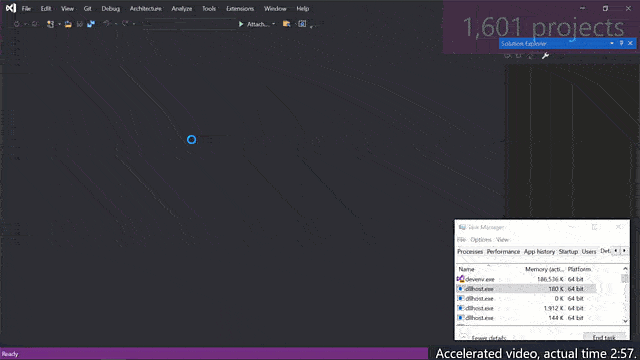The existence of 64-bit Visual Studio Code is largely a side-effect of the fact that the Node.js- and Chromium-based runtimes of Electron support both 32- and 64-bit architectures, not a primary design goal for the application. Microsoft developed VS Code with Electron, a framework used to build desktop applications with web technologies.
Because Electron already includes runtimes for both architectures (and for different operating systems), VS Code can provide both versions with little additional effort—Electron abstracts the differences between machines from the JavaScript code.
By contrast, Microsoft distributes much of Visual Studio as compiled binaries that contain machine-specific instructions, and the cost of rewriting and maintaining the source code for 64-bits historically outweighed any benefits. In general, a 64-bit program isn't noticeably faster to the end user than its 32-bit counterpart if it never exceeds the limitations of a 32-bit system. Visual Studio's IDE shell doesn't do much heavy-lifting—the bulk of the expensive processing in a typical workflow is performed by the integrated toolchains (compilers, etc.) which usually support 64-bit systems.
With this in mind, any benefits we may notice from running a 64-bit version of VS Code are similar to those we would see from using a 64-bit web browser. Most significantly, a 64-bit version can address more than 4 GB of memory, which may matter if we need to open a lot of files simultaneously or very large files, or if we use many heavy extensions. So—most important to us developers—the editor won't run out of memory when abused.
While this sounds like an insurance policy worth signing, even if we never hit those memory limits, remember that 64-bit applications generally consume more memory than their 32-bit counterparts. We may want to choose the 32-bit version if we desire a smaller memory footprint. Most developers may never hit that 4 GB wall.
In rare cases, we may need to choose either a 32-bit or 64-bit version if we use an extension that wraps native code like a DLL built for a specific architecture.
Any other consequences, positive or negative, that we experience from using a 64-bit version of VSCode depend on the versions of Electron's underlying runtime components and the operating system they run on. These characteristics change continuously as development progresses. For this reason, it's difficult to state in a general manner that the 32-bit or 64-bit versions outperform the other.
For example, the V8 JavaScript engine historically disabled some optimizations on 64-bit systems that are enabled today. Certain optimizations are only available when the operating system provides facilities for them.
Future 64-bit versions on Windows may take advantage of address space layout randomization for improved security (more bits in the address space increases entropy).
For most users, these nuances really don't matter. Choose a version that matches the architecture of your system, and reserve switching only if you encounter problems. Updates to the editor will continue to bring optimizations for its underlying components. If resource usage is big concern, you may not want to use a GUI editor in the first place.
